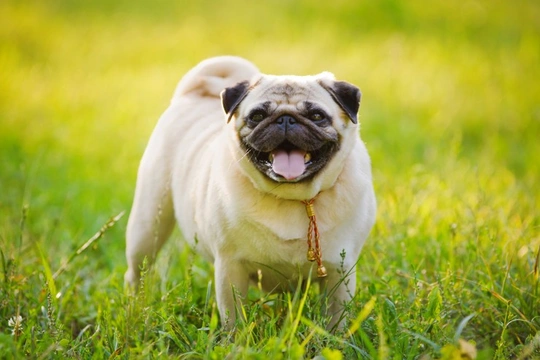
Five weight loss strategies for obese dogs
More than 50% of all dogs in the UK are overweight to some degree, with some dogs being significantly heavier than they should be, suffering from canine obesity. Carrying too much excess weight can be a huge problem for dogs, greatly increasing the risk of them developing a whole range of health problems including joint and muscle strains, heart problems and a wide range of other issues.
Obviously it is highly preferable to prevent your dog from getting too fat to begin with than it is to help them to lose weight after they have been diagnosed as obese, but this can be easier said than done, with many dog owners not even realising that their dog is overweight or obese in the first place.
If your dog is overweight, you should take proactive steps to get them back down to a healthy balance of food intake and exercise, and in this article, we will share five weight loss strategies and tips for obese dogs. Read on to learn more.
Decide upon a diet
Just like human weight management, the weight of your dog will depend on a simple equation of calories in, versus calories out. In order to lose weight, your dog should expend more calories per day than they are fed, and so, start burning off their excess body fat. Exactly how much food your dog needs per day will depend on factors including their age, size and activity levels, and it is a good idea to work with your vet or a veterinary nurse to design an effective feeding plan for your overweight dog.
This may involve feeding less of your dog’s normal food, or switching them over to a lower calorie diet that allows them to eat the same amount as before but with fewer calories.
Nutrition
However much or little your dog eats each day, it is of course essential that your dog still gets all of the essential nutrients that they need to thrive, which means that they must be fed a balanced diet that is tailored to fulfil all of their needs while helping them to lose weight.
Your dog’s diet should consist of at least 20% good quality protein, as well as a proportion of fat such as those from fish oils, and fibre to help with digestion. Steer clear of foods that are high in carbs, sugars and bad fats, as these will not help your dog to either lose weight or feel full.
Feeding at least a proportion of wet food as part of your dog’s diet is a good idea, as the added water content of wet food versus dry will help your dog to feel full
Controlling your dog’s food intake
In order to make your dog’s diet successful, you will need to carefully calculate how much food they need each day, and measure this out rather than guessing or free feeding. Once you know how many calories your dog can eat each day, you can assign a small percentage of this to treats to use as rewards, but ensure that your dog’s treats are all incorporated into your feeding plan, in order to avoid sabotaging your efforts!
Exercise
Exercise is a vital part of any canine weight loss plan, and will help your dog to lose weight faster as well as getting fitter. A dog that has a little more exercise per day can also afford to eat a few more calories, and making a drastic cut in calories at the same time as increasing your dog’s activity levels is not the best way to go about weight loss.
A dog that is sedentary and overweight will need to be reintroduced to exercise gradually, with small increases in activity levels made every few days to allow your dog to get used to the new regime, and get fit.
Try to encourage your dog to do more by doing things that they enjoy, such as playing games, socialising with other dogs in the dog park or taking part in other fun activities so that your dog can get active without finding it boring or hard work.
Avoid yo-yo dieting
Yo-yo dieting is one of the common perils of human weight loss, and involves a cycle of losing the desired amount of weight and then regaining it, often with a little extra, in an ongoing vicious circle. People often say about diets “yes, but when you start to eat normally again you’ll put it all back on again,” and this is true for the dog too- if you go back to feeding them and exercising them in the same way that let them get fat in the first place!
Once your dog is making progress and approaching their ideal weight, you will need to devise a maintenance plan for feeding and walking that is suitable for your dog, and will help them to maintain their new healthy weight. Going back to the same old bad habits must be avoided at all costs!



